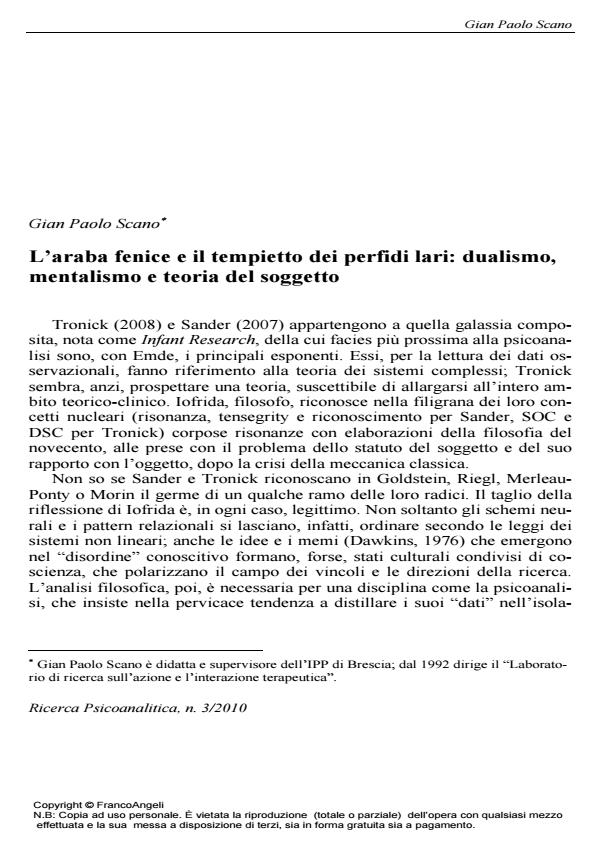The arabian Phoenix and the little temple of the perfidious lares
Journal title RICERCA PSICOANALITICA
Author/s Gian Paolo Scano
Publishing Year 2010 Issue 2010/3
Language Italian Pages 20 P. 77-96 File size 516 KB
DOI 10.3280/RPR2010-003006
DOI is like a bar code for intellectual property: to have more infomation
click here
Below, you can see the article first page
If you want to buy this article in PDF format, you can do it, following the instructions to buy download credits

FrancoAngeli is member of Publishers International Linking Association, Inc (PILA), a not-for-profit association which run the CrossRef service enabling links to and from online scholarly content.
Psychoanalysis was born as a physicalistic discipline at the time of the crisis of classical mechanics. Such a crisis left its mark on the psychoanalytic theory and its historical evolution, which resulted in an unexpected dualism between mentalistic and reductionistic issues. It is difficult to say if the systems theory is a valid antidote against the return of mentalism. There are, in fact, deep-rooted prejudices that hinder the process of knowledge, like the Baconian idola theatri. The author focuses on some of them and notes that the evolutionistic perspective has to be much more acknowledged in the psychological theorization. The brain also has to be acknowledged as a casual effect in the natural history of organic life on this planet, even in its highest nature of "constructor of the mind". From this vantage point, the author focuses on the role of the qualia in the world of natural selection. The problem of the "I", of the subjectivity and of the intersubjectivity is probably solved in the light of the theory of evolution, as an integration of the "second nature" in the first one. We can thus avoid both the Scylla of mentalism and the Charybdis of reductionism.
Keywords: Dualism, mentalism, qualia, subject theory, "I"
Gian Paolo Scano, L’araba fenice e il tempietto dei perfidi lari: dualismo, mentalismo e teoria del soggetto in "RICERCA PSICOANALITICA" 3/2010, pp 77-96, DOI: 10.3280/RPR2010-003006